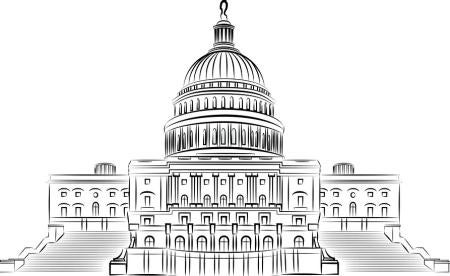In our previous publication, titled “Enactment of New Law Means Increased Duty Evasion Investigations by Customs,” we provided highlights of the Enforce and Protect Act of 2015 (EAPA). EAPA was enacted as part of a larger package of trade legislation, the Trade Facilitation and Trade Enforcement Act of 2015, and is intended to significantly enhance the U.S. government’s ability to combat antidumping (AD) and countervailing (CVD) duty evasion. As a result of EAPA, U.S. Customs and Border Protection (CBP) has issued interim rules concerning its proposed implementation and enforcement.
Overall, the interim rule appears to be another indication of how CBP is becoming more enforcement-focused. Many of our clients are realizing CBP’s enforcement efforts reflected in the tone of communications from CBP Regulatory Audit (targeting regular and single issue AD/CVD audits), enforcement activities by CBP’s Centers for Excellence and Expertise (CEE), and increased use of Requests for Information (CBP Form 28) and Notices of Action (CBP Form 29) targeting enforcement activity. These efforts are especially aimed at AD/CVD enforcement, a CBP priority trade issue.
This AD/CVD enforcement focus will likely be further intensified going forward, as the U.S. Government Accountability Office (GAO) recently issued a report to the Chairman of the Senate Finance Committee, in which the GAO found that about $2.3 billion in AD/CVD duties owed to the U.S. government were uncollected as of mid-May 2015, and proposed recommendations to CBP to increase recovery of AD/CVD duties and better manage non-payment risk.
What are AD/CVD Duties? AD duties are imposed to offset unfairly low pricing in the United States by foreign exporters. CVD duties are imposed to offset unfair subsidies provided by a foreign government. The Department of Commerce (DOC) determines whether dumping and subsidies are occurring, while the U.S. International Trade Commission (ITC) determines whether the U.S. domestic industry is material injured or threatened with material injury by reason of the dumped and subsidized imports.
If both the DOC and the ITC issue affirmative determinations, the DOC issues AD and/or CVD orders that establish cash deposit rates for entries of merchandise covered by the orders. Those entries will be liquidated at the cash deposit rate unless interested parties request an administrative review to establish a revised AD/CVD duty rate. CBP is responsible for the collection of both AD/CVD cash deposits at the time of importation, as well as for collection of the final AD/CVD duties on subject merchandise. DOC remains the agency responsible for determining whether a product is within the scope of an AD/CVD order.
Definition of Evasion: The EAPA and the interim rule were enacted to combat the evasion of AD/CVD duty payments. The interim rule states that evasion refers:
to entering merchandise into the customs territory of the United States for consumption by an act or omission that is material and false, and which results in antidumping or countervailing duties being reduced or not applied to or collected on such merchandise. Examples of evasion could include, but are not limited to, the misrepresentation of the merchandise’s true country of origin (e.g., through fraudulent country of origin markings on the product itself or false sales), false or incorrect shipping and entry documentation, or misreporting of the merchandise’s physical characteristics.
CBP Is the Department Charged With Investigating Evasion: Evasion investigations will be conducted by CBP’s newly constituted Trade Remedy Law Enforcement Directorate (TRLED).
Filing of Evasion Allegations: Either an interested party (a domestic producer or competing importer) or another federal agency can file a request with CBP to commence an investigation of potential AD/CVD duty evasion. Once received, TRLED will have 15 business days to decide whether to initiate an investigation.
Notice to the Alleged Evading Importer: If an AD/CVD evasion investigation moves forward, the interim rules require TRLED to notify all known parties within 95 calendar days after the date of initiation, including the importer against which the allegation was made. Importantly, once CBP notifies the importer of a new TRLED investigation regarding the potential evasion of AD/CVD duties, the importer will unlikely be eligible for the protection afforded under the prior disclosure mechanism. As a result, in such instances, the importer could be subject to the harsh penalties available to CBP pursuant to 19 U.S.C. § 1592.
Interim Measures: The interim rule states that TRLED must make a preliminary determination within 90 days, and take interim measures if there is a reasonable suspicion that the importer entered covered merchandise into the customs territory of the United States through AD/CVD duty evasion.
Final Determination as to Evasion: Within 300 calendar days, TRLED must make a final determination of evasion. TRLED can, however, extend the deadline by 60 days if the case is extraordinarily complicated. In addition, if TRLED seeks an opinion from DOC as to whether a product is covered by the scope of an AD/CVD order, TRLED’s deadline will be tolled while DOC addresses the issue.
Investigation Procedures: TRLED may collect all necessary information to make its AD/CVD duty evasion determination through such methods as it considers appropriate. One such method specifically mentioned in the interim regulations is the use of questionnaires to request information from interested parties making the allegation, as well as from the government of the foreign country from which the allegedly covered merchandise was exported. Similarly, questionnaires may be issued to the importer, foreign producer, or exporter of the allegedly covered merchandise. Information received in response to such questionnaires is subject to verification, including verifications in a foreign country of the producer or exporter of the goods.
Consequences of an Affirmative Evasion Determination: If TRLED makes an affirmative determination of evasion, CBP will (1) suspend the liquidation of unliquidated entries of covered merchandise subject to the determination; (2) extend the period for liquidating any unliquidated entries of covered merchandise entered prior to initiation of the investigation; (3) notify DOC of the determination and request the DOC to determine the appropriate duty rates for such covered merchandise; (4) require importers of covered merchandise to post cash deposits and assess duties on the covered merchandise; and/or (5) take such additional enforcement measures as CBP deems appropriate, including modifying CBP’s procedures for identifying future evasion, reliquidating entries as provided by law, and referring the matter for possible civil or criminal investigation.
Interaction between TRLED and DOC: The interim rule provides that if TRLED is unable to make a determination as to whether a product is within the scope of an AD/CVD order, it may refer the scope issue to DOC for resolution. Nevertheless, a similar procedure does not exist for importers. Although an investigation by TRLED does not bar an importer from requesting a scope ruling by DOC, the way in which the interim rule is currently drafted does not authorize TRLED to toll its investigation while DOC makes a scope ruling. This means that TRLED can still make an affirmative evasion determination while DOC is still deciding whether a particular product is within the scope of an AD/CVD order. In this situation, it is likely that in making its affirmative evasion determination, TRLED would suspend unliquidated entries and require the importer to post applicable AD/CVD cash deposits pending DOC’s scope determination.
While TRLED may ask DOC for advice as to whether a product is covered by the scope of AD/CVD orders, the interim rule does not specify whether this would be done through a formal scope inquiry or through some less-formal procedure. Given the DOC’s very high case load, coupled with the significant number of AD/CVD scope ruling requests pending at the DOC, it is unlikely that DOC – even if there is an informal procedure – will be able to expeditiously assist TRLED. As such, it is anticipated that TRLED (i.e., CBP) will take an expansive view of whether a product is within the scope of an AD/CVD order. If the importer disagrees with TRLED’s evasion determination, the importer will need to request a scope ruling with DOC in order to reverse its determination. However, nothing is mentioned in the interim rule about the interaction between TRLED’s processes and DOC’s scope ruling procedures.
Referrals for Civil and Criminal Violations: As noted above, TRLED must notify importers of an evasion investigation within 95 calendar days of the initiation of the evasion investigation. Once notified of such formal investigation, the importer will likely be foreclosed from claiming prior disclosure protection on the issue.
It is anticipated that TRLED will lead to increased CBP enforcement actions and civil penalties under 19 U.S.C. § 1592, which for negligence or gross negligence allegations can extend back five years, regardless of whether an entry is finally liquidated. In those cases where it is unclear whether a product is within the scope of an AD/CVD order, or where an importer is able to demonstrate reasonable care in its initial AD/CVD scope determination, it is possible that CBP may refrain from imposing civil penalties. Nevertheless, for more egregious evasion violations, such as transshipment schemes or intentional invoice mis-descriptions, it is anticipated that CBP will get tougher on violators by imposing additional civil and criminal penalties.
Importers Should Take Notice: Given the aggressive nature of EAPA and the powers provided to CBP’s newly constituted Trade Remedy Law Enforcement Directorate, importers should elevate their reasonable care and internal review activities to avoid unintended missteps surrounding AD/CVD compliance.
We suggest importers take the opportunity to ensure that they are properly depositing AD/CVD duties on in-scope merchandise, and review at-risk product lines to confirm that the merchandise is outside the scope of current AD/CVD orders. Any AD/CVD questionnaires received should be carefully reviewed and accurately addressed, ensuring coordination with supply chain and legal teams for complete vetting. It is also recommended that importers monitor the liquidation status of their entries via ACE, and that any unanticipated extensions to liquidation be evaluated for product patterns or possible compliance gaps. Further, all Requests for Information (CBP Form 28) and Notices of Action (CBP Form 29) should be carefully reviewed and accurately responded, elevating potential AD/CVD scope issues where appropriate to meet the company’s reasonable care obligations, including consideration of whether a scope ruling request with DOC is appropriate in coordination with any response to CBP.





 i
i

